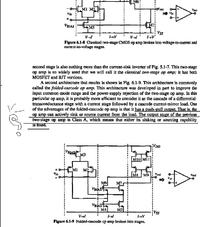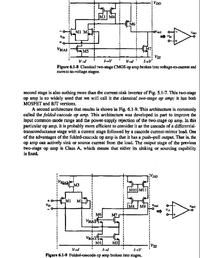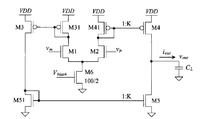Junus2012
Advanced Member level 5
Hi all
The push pull output stage is supposed to be better than for example class A as it source and sink the capacitor load from both direction, my question is related to the class A , if it can either sink or source ( depending if it is N or P type) then how we are getting a positive S.R that is equal to the Negative S.R ??? mean of how the capacitor are charging or discharging in the other direction ??
I welcome very much your replies
Thank you
The push pull output stage is supposed to be better than for example class A as it source and sink the capacitor load from both direction, my question is related to the class A , if it can either sink or source ( depending if it is N or P type) then how we are getting a positive S.R that is equal to the Negative S.R ??? mean of how the capacitor are charging or discharging in the other direction ??
I welcome very much your replies
Thank you


